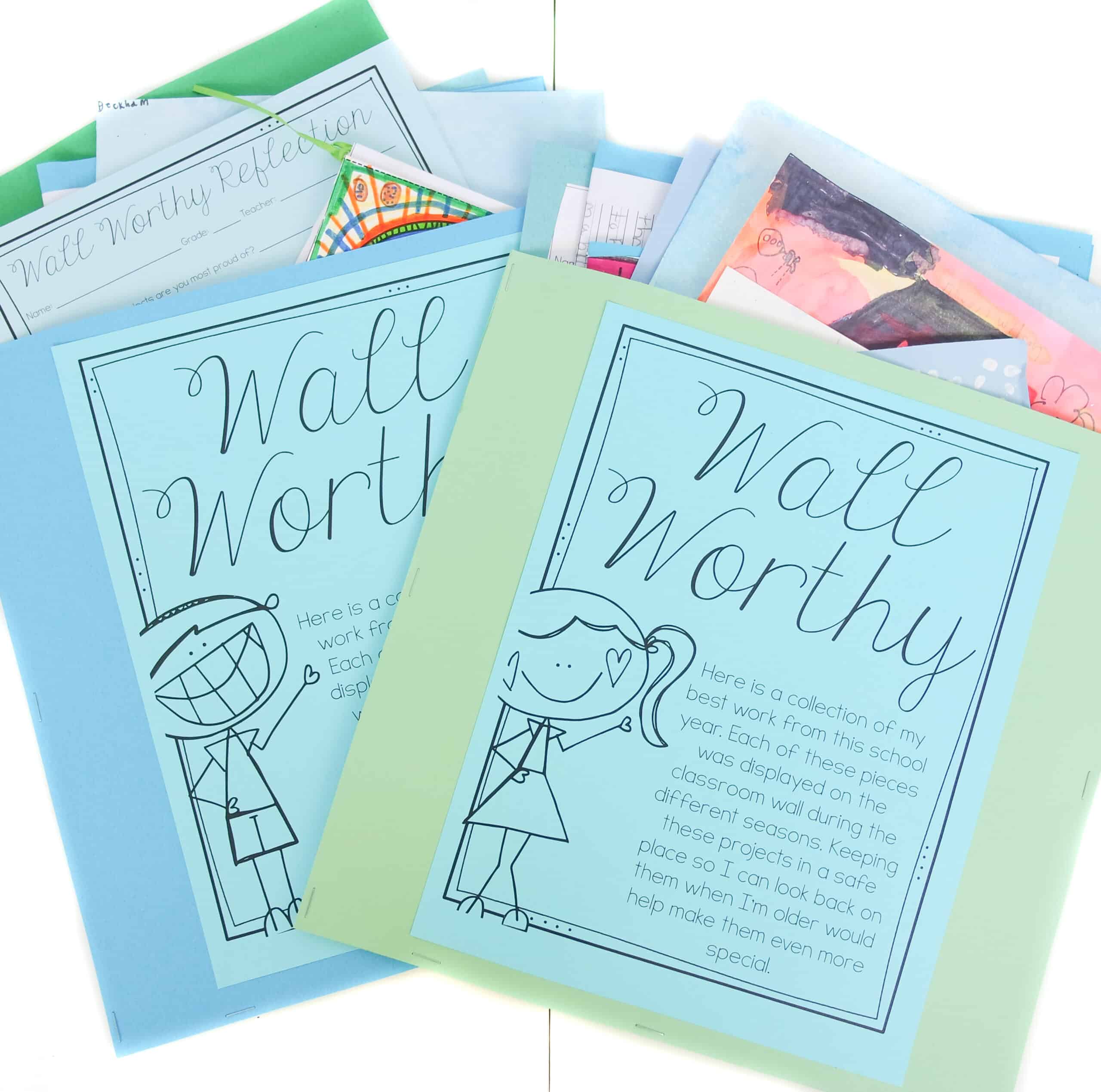
Project based learning can help you transform your 2nd or 3rd grade place value unit into a wildly engaging cross-curricular learning experience! Imagine sending your students on a wildlife expedition to find amazing information about animals that interest them in the habitat of their choice.
While your students are fully immersed in their fun animal research, they can also practice essential place value skills as they represent the weight, size, and average lifespan of these animals in word form, expanded form, standard form, and rounded form. You can even have them compare the sizes of the animals from their habitat using place value knowledge.
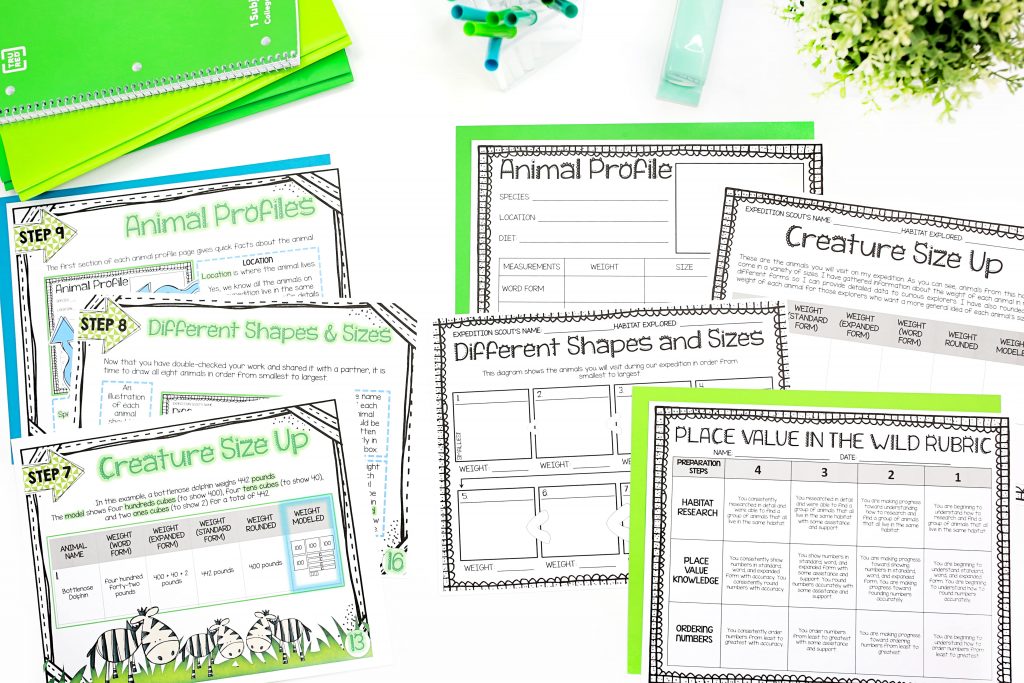
The good news is all the work of creating a project based learning unit that weaves in place value, nonfiction research, and public speaking has been done for you. This year, your students will absolutely love practicing their place value skills as they work through the simulation Place Value in the Wild!
This resource is perfect for differentiating in both second and third grade classrooms.
Let’s take a closer look at this place value project based learning resource.
During this project based learning (PBL) unit, your students will work toward becoming expedition scouts for Wildlife Explorers International. As part of their job application process, they must create an expedition field guide filled with information about animals from the habitat of their choice.
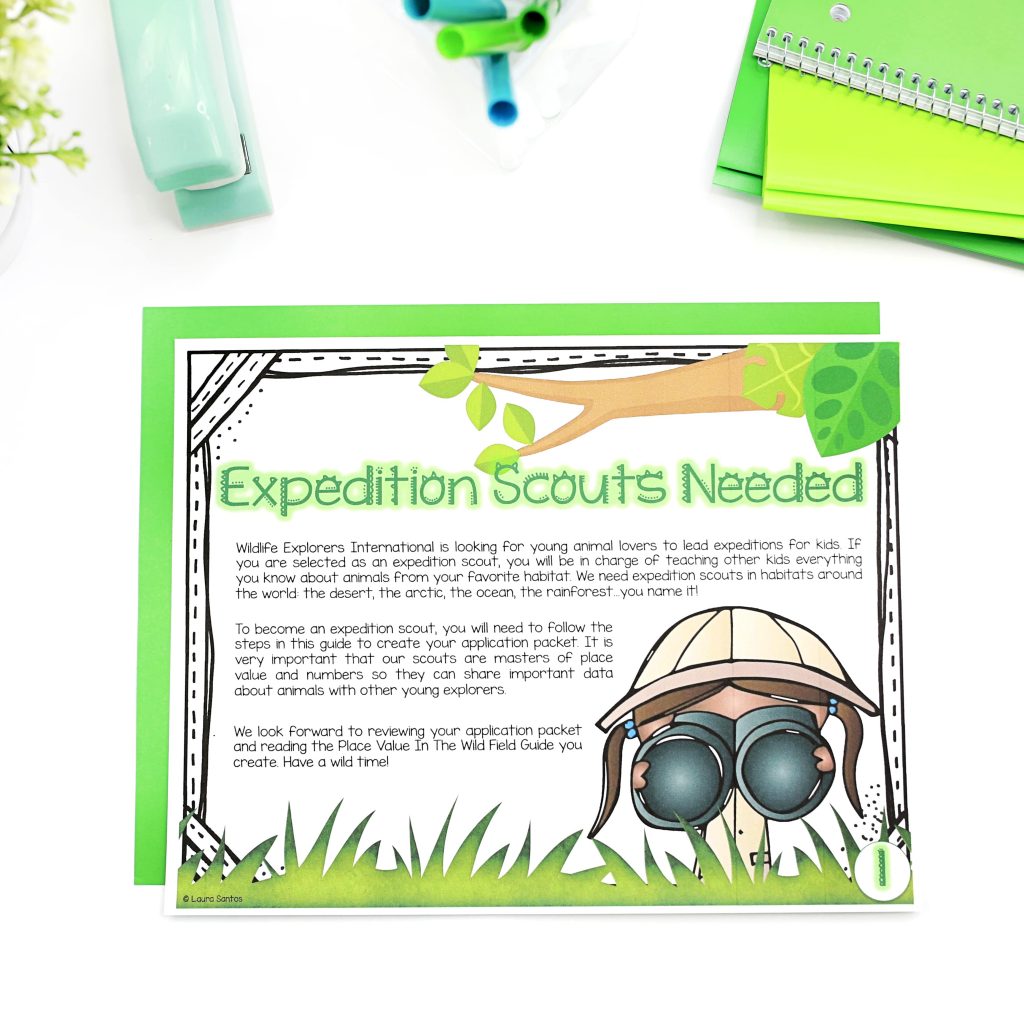
This math project requires the application of students’ knowledge of place value. Throughout the process of the Place Value In The Wild simulation, students will have the opportunity to apply their knowledge through creative design, engage in informational research that incorporates their math knowledge, and build organization skills as they plan and execute this multi-day project.
The main focus of this math simulation is on second and third grade place value standards. Throughout the project, students will:
In addition to these important math skills, students will also practice their expository writing & research skills as they report on amazing facts about the eight animals they choose to feature in their Place Value in the Wild Field Guide.
Students will then use their public speaking skills to present their final research either in-person or through a video recording that culminates this project.
During this cross-curricular math project, your 2nd and 3rd graders will work towards being hired as an expedition scout for Wildlife Explorers International. Here are the steps they will take during the course of the project:
★ Select one natural habitat from around the world. Students will select a habitat they are interested in learning more about. Eleven suggested habitats are included in the resource along with space for any other habitat students may brainstorm. After selecting their habitat, students will provide a brief explanation as to why they made their selection and list several specific animals that live in that habitat before narrowing their list down to their top 8 favorite animals.
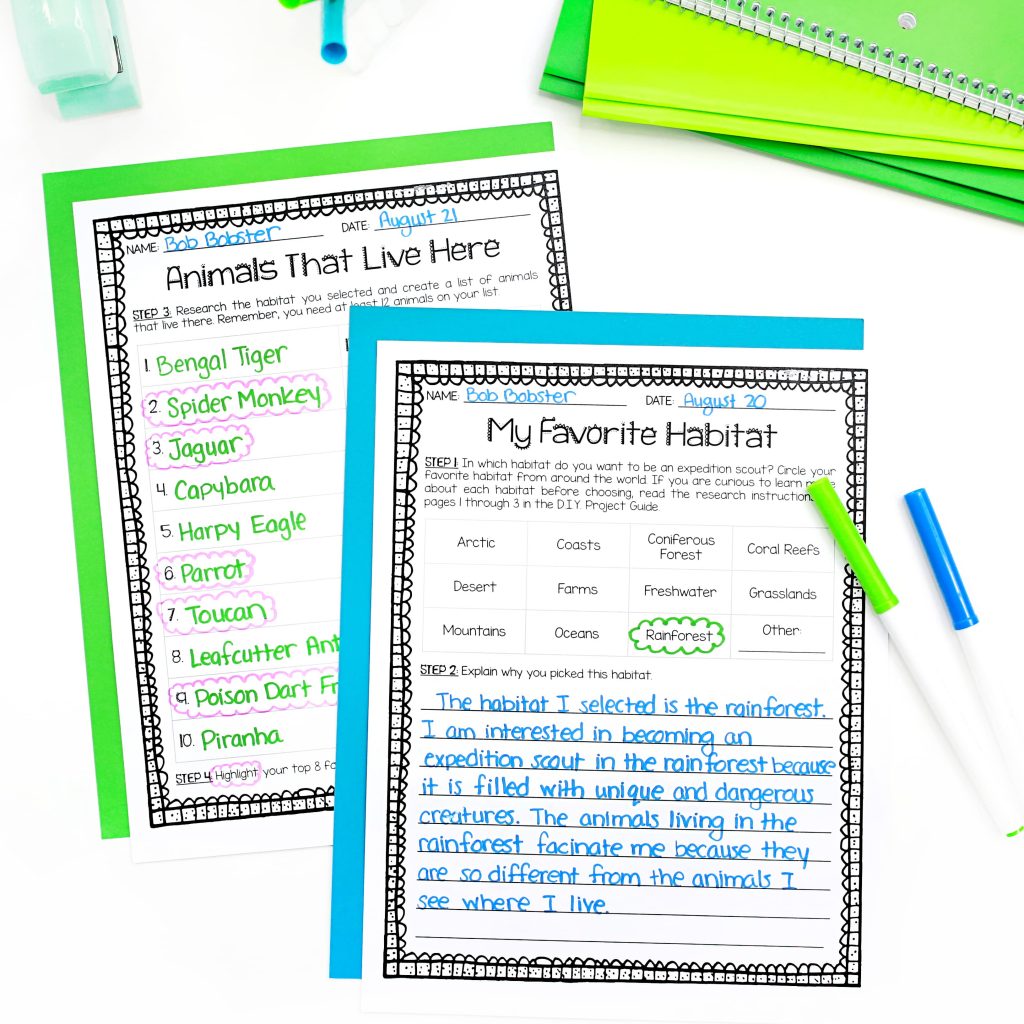
★ Compare and order the size/weight of each animal researched. During this process, students write the animal’s weight in word form, expanded form, standard form, and rounded form. They also model the weight using place value blocks. Next, students order the weights of these animals from least to greatest (or lightest to heaviest).
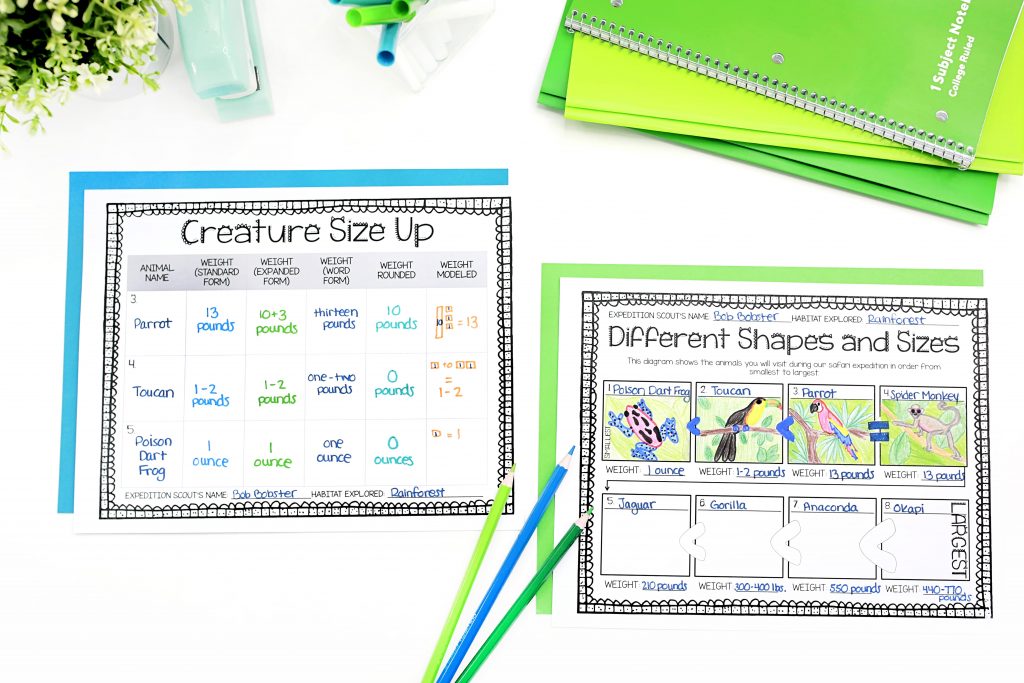
★ Write an “Animal Profile” page for each of the eight animals. These profile pages require informational research skills so students can gather facts about each animal’s diet, size, lifespan, and any other amazing information they want to share with young explorers. As students write their interesting facts about the eight animals, they must also provide 2-3 supporting details that give more information about each fact.
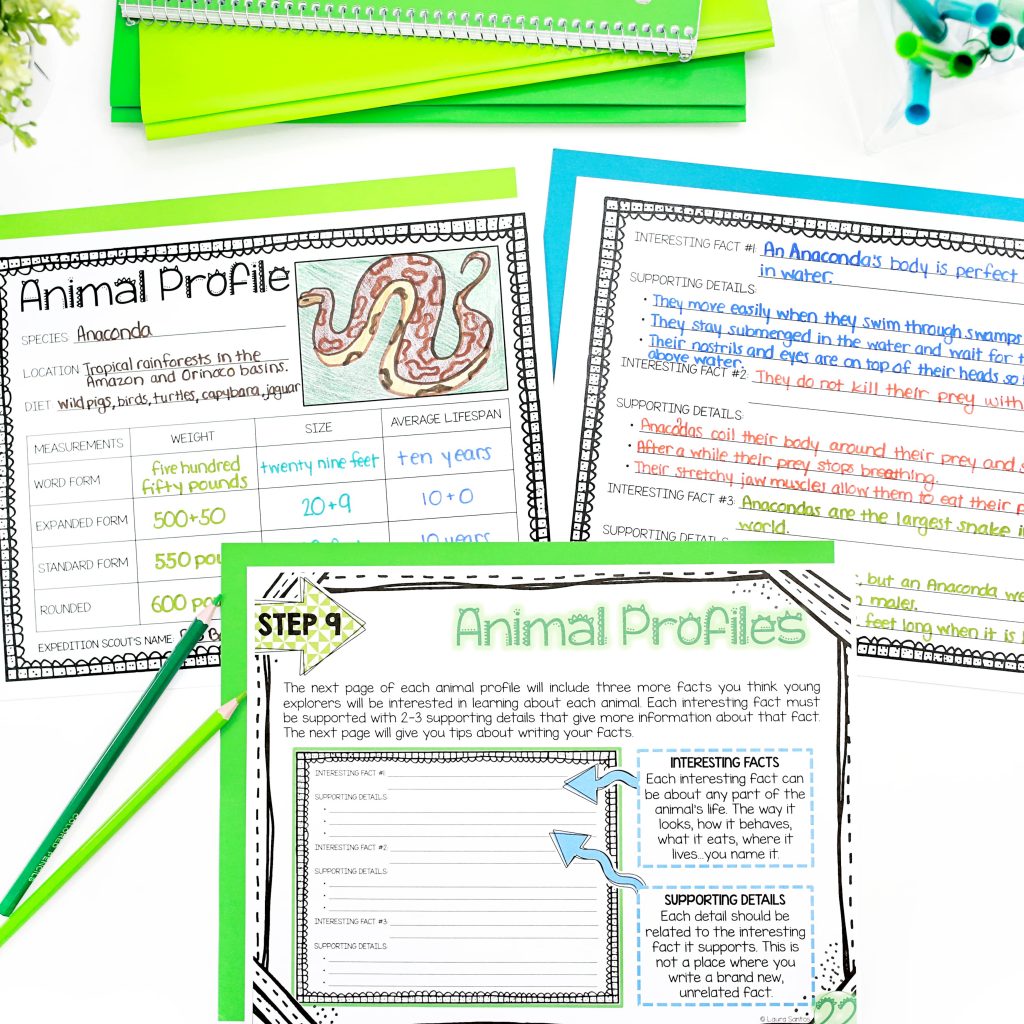
★ Create a video clip in which they reflect on the learning and growth they made throughout the project. If digital equipment is unavailable, a live presentation can also be done.
★ Complete a self-assessment of their project using a three-part rubric. Each of the project deliverables described above has its own section on the rubric so students can participate in a very specific and fair assessment process as they demonstrate their learning.
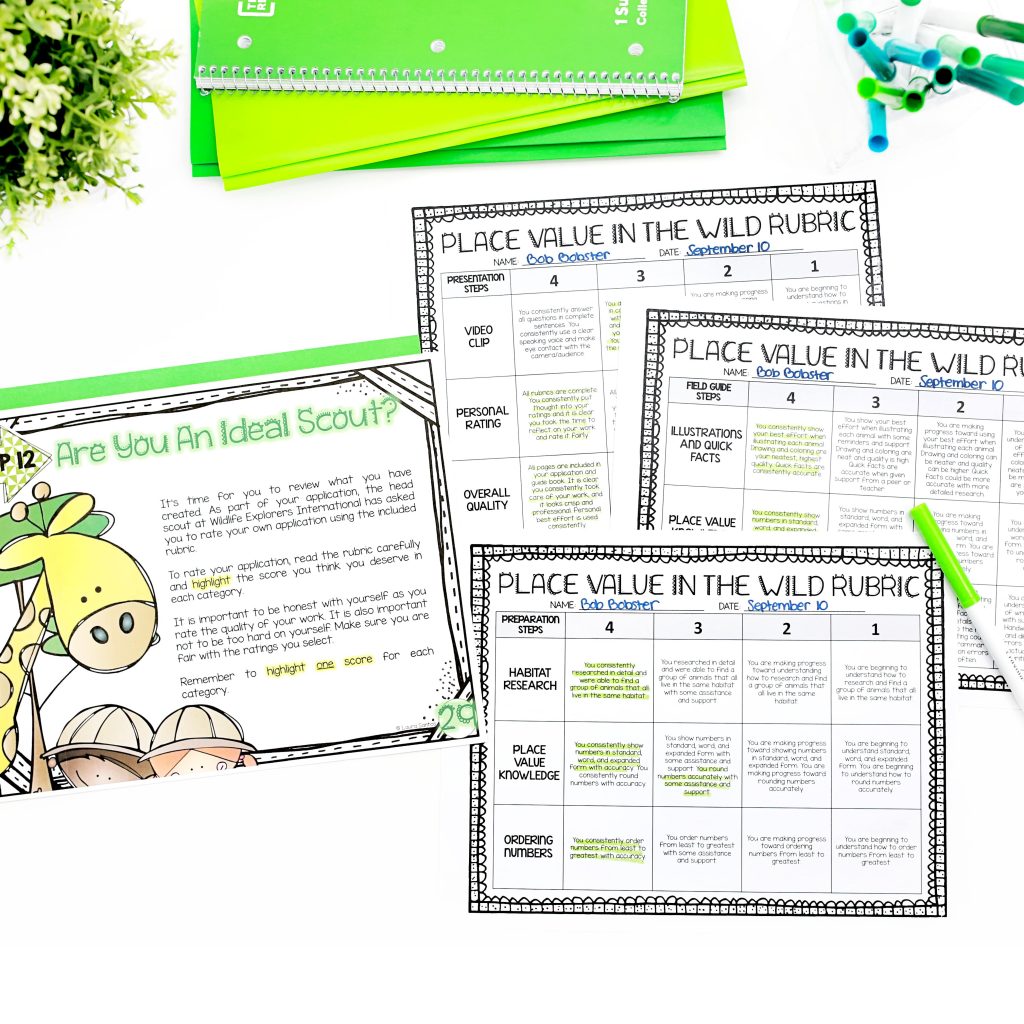
Want to incorporate a project into your place value unit, but crunched for instructional time?
This resource makes prepping for project based learning a breeze and makes implementation seamless. The detailed visual instructions on each page of the guide make it possible for students to complete their unique project with maximum independence so you have the time you need to teach or reteach essential place value skills to small groups.
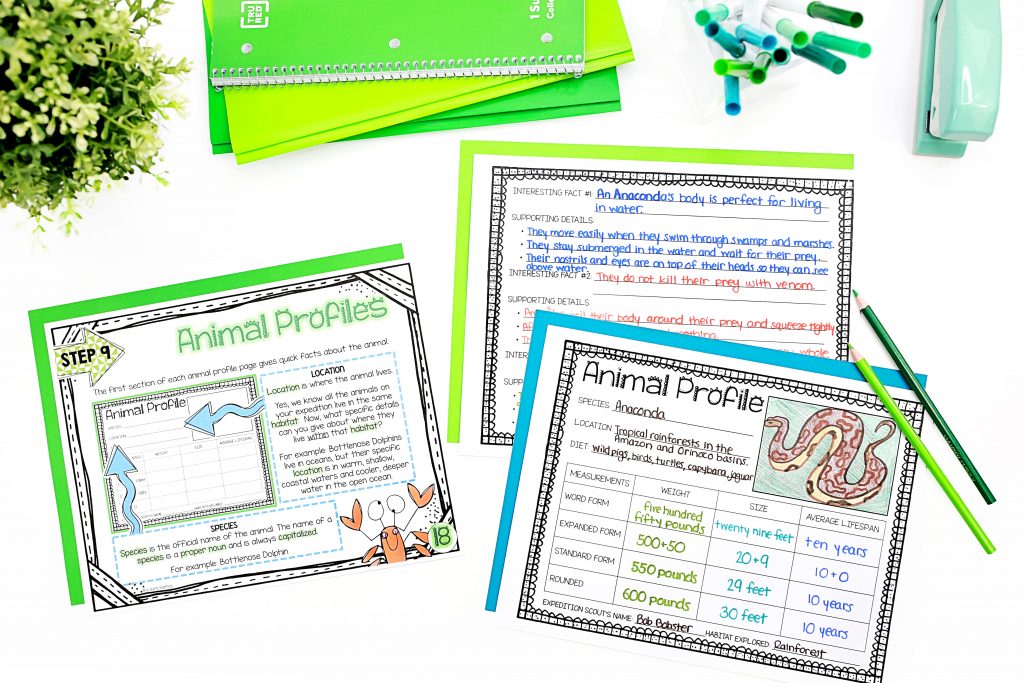
Scoring and providing students with feedback is also easy when using the included rubric. Each of the important pieces of the project: preparation, field guide creation, and project assembly have its own rubric so students can participate in the assessment process as they demonstrate learning, and you can provide them with specific feedback about their work.
Every step of the Place Value in the Wild experience is outlined in a project guide that includes clear visuals and step-by-step instructions. Rubrics and reflection prompts will encourage your students to reach their learning goals.
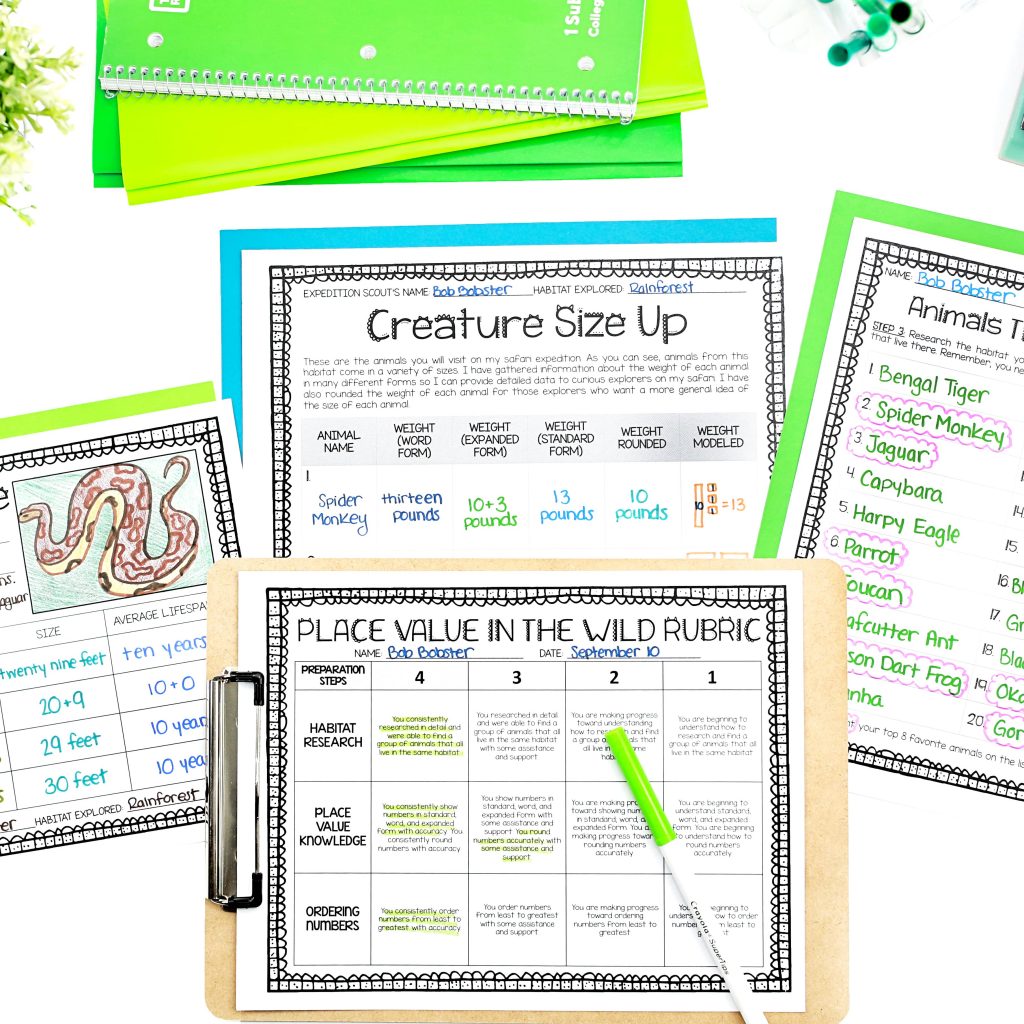
The format of this math project guide makes it an ideal resource for:
★ At your seat & hands-on enrichment during math workshop or guided math
★ Math center work
★ Digital learning (a Google Slides version of the entire project is included)
★ Parent volunteer or teacher’s aide enrichment station
★ A focal point for a place value room transformation
★ An alternative assessment that allows you to measure student understanding on a deeper level as a culmination to your place value unit.
Whether you’re searching for an activity that provides enrichment to your high flyers while you teach small groups during your place value unit, you’re looking to bring a little life to your end-of-unit assessment, or you just want a creative way to switch up your math routine, you and your students will love Place Value in the Wild!
Visit the Place Value in the Wild resource page to see a full preview so you can learn more about this fun math project.
If you have any questions about this math simulation, let me know in the comments below.
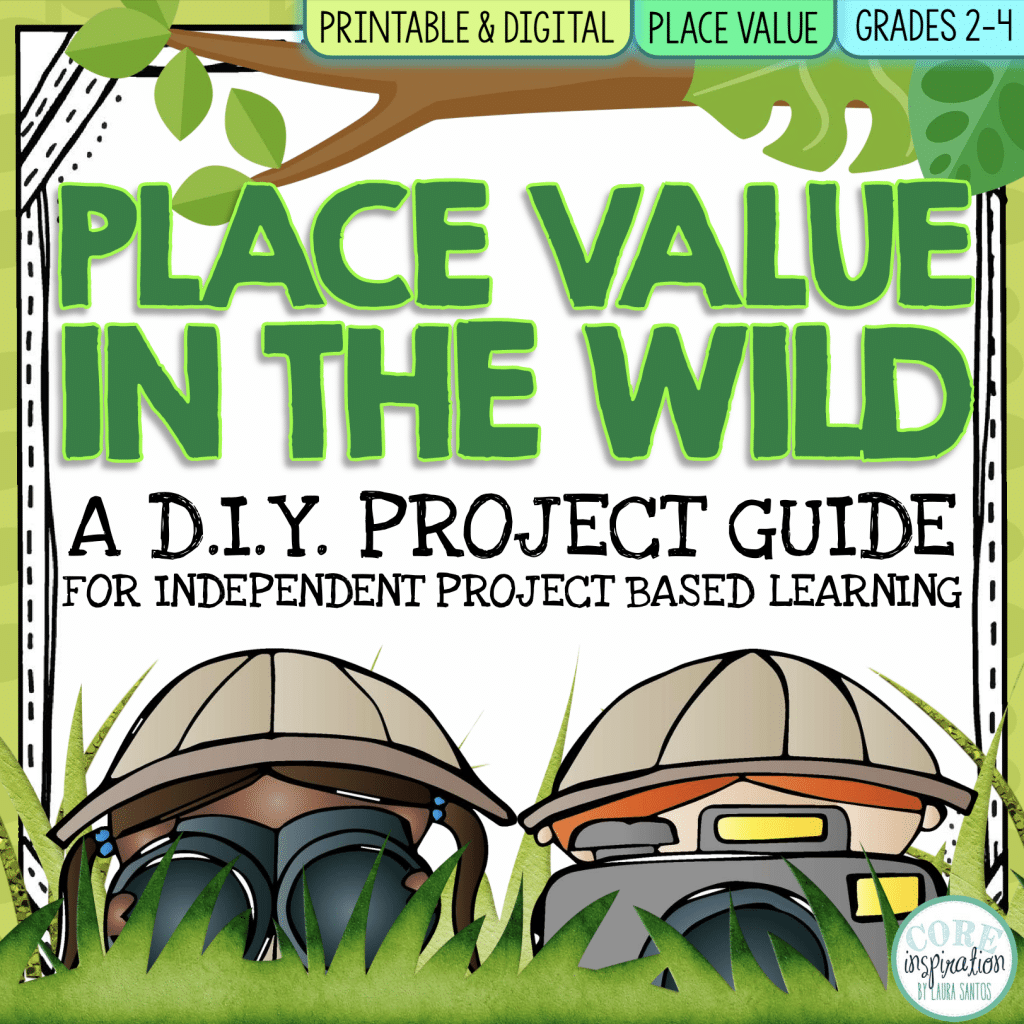

I’ve been an elementary teacher for ten years, and love sharing tips and resources that make differentiated learning more manageable for you. Thank you for visiting.
Learn More
Dropping by with weekly tips, classroom strategies, and free content created with you in mind.
Join me and other 2nd through 4th grade educators in the Teaching with Core Inspiration Facebook Group. This is a place to collaborate, ask questions, and learn how teachers like you are using Core Inspiration resources in their classrooms. Hope to see you there!
© 2024 Core Inspiration ∙ Website by KristenDoyle.co